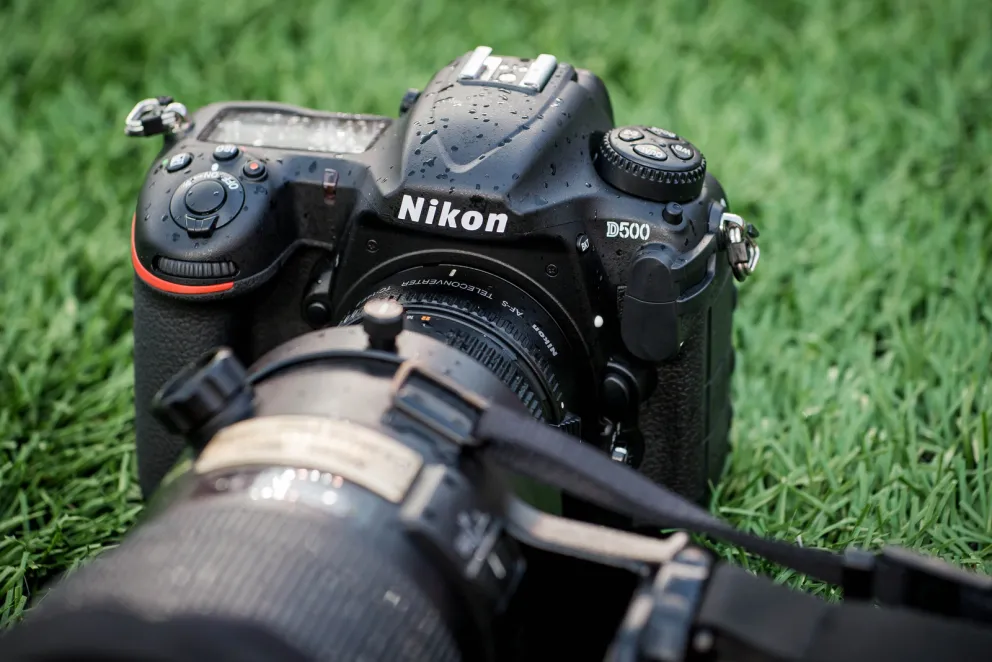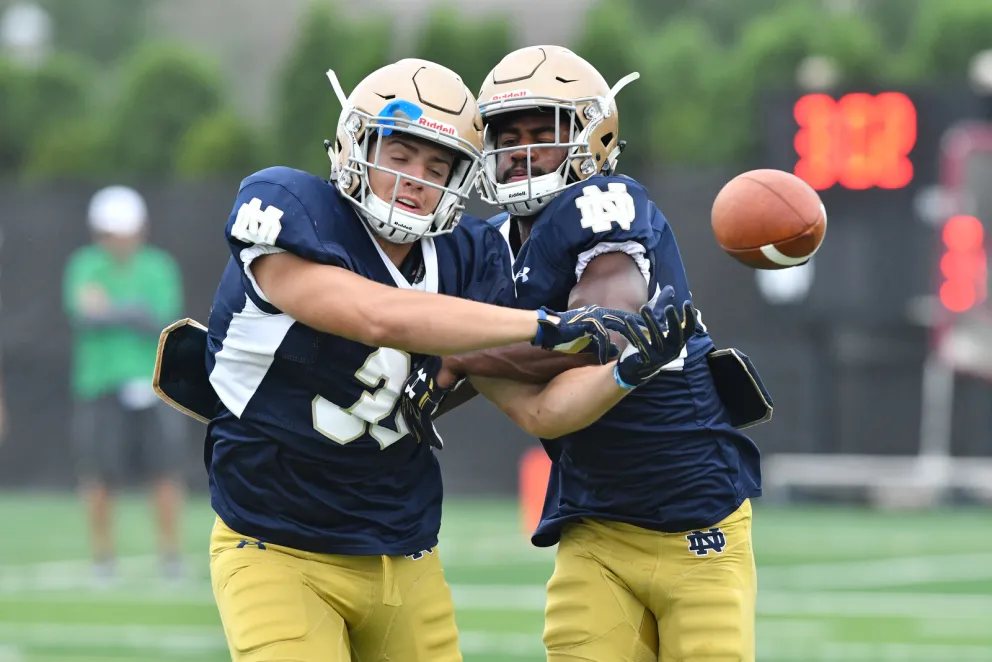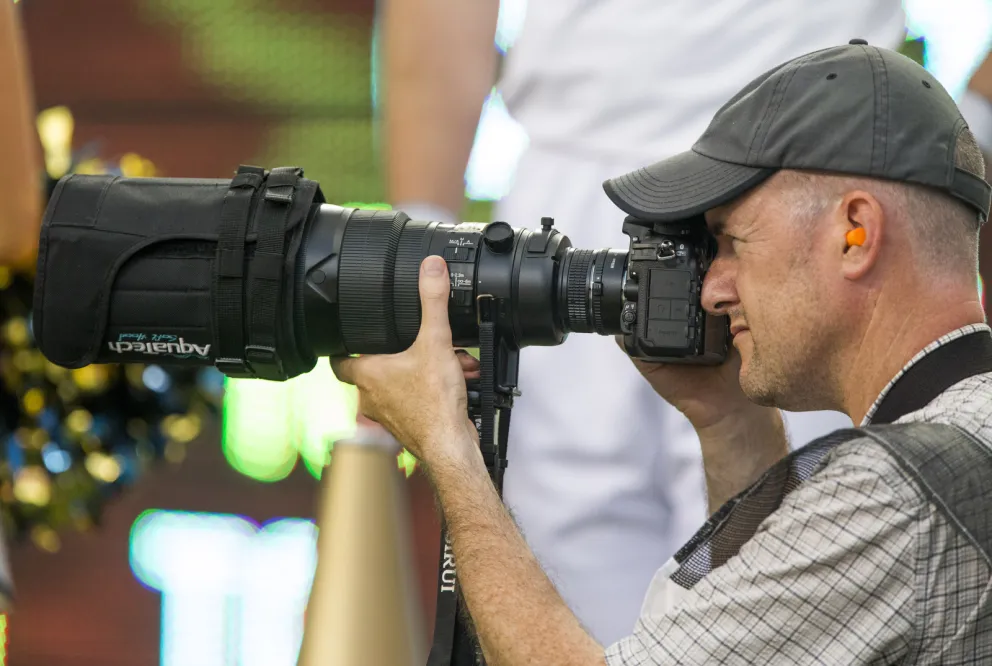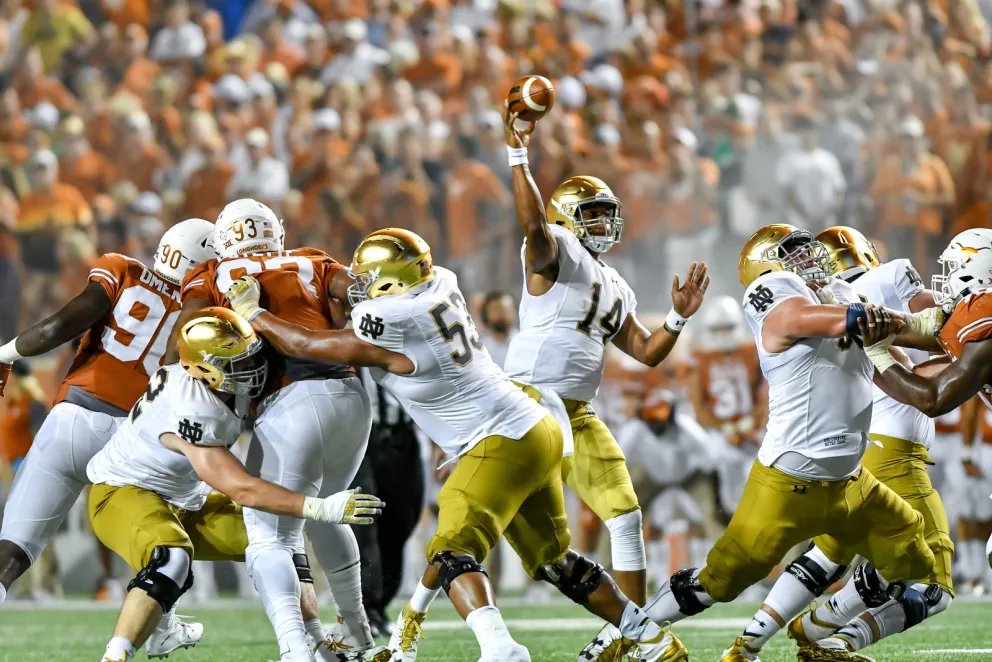
Photo by Matt Cashore, University of Notre Dame
There are certain things which trouble me more than they probably should. Among these: Mayonnaise…the intentional grounding rule…pop-up flashes on DSLRs. I prefer full-frame, so the announcement of a new DX-format DSLR from Nikon would normally fly under my radar. But when I saw the D500 was pop-up flash-less, it had my attention.
This past spring and summer I did quite a bit of traveling which involved shooting video. I was feeling the need for a compact, lightweight video-capable DSLR. The advantages of a tilting LCD screen were obvious. So why not the D750? Full-frame and good reviews, but a slower flash sync speed (1/200) and that (grrrr!) pop-up flash always gave me pause.
The D500 beckoned with it’s nice solid prism, professional round eyepiece, and 1/250 sync. Specs on AF and low-light performance looked good. Could I live with DX format? Maybe... Nikon's $500 rebate for the D500 with the well-reviewed 16-80 zoom pushed me off the ledge. I impulse-bought one.
Initial impressions were positive:
Camera felt great. More solid and professional than any other small-body Nikon DSLR I had ever used. The 16-80mm lens seemed like a solid performer and covered pretty much everything I needed to do with video in a single lens.

The first real test of the kit came one night about a week later when storms were approaching the South Bend area. I saw the potential for some lightning photos, and the easiest option I had handy was the D500 with the kit lens. My expectations were met and then some. I didn't notice any drop in image quality vs a full frame sensor and prints from that shot look very nice.

Next up, pre-season football practice would test the D500’s AF capabilities. The DX format meant I could use my lighter 300mm lens and get the same “reach” with the 1.5x crop that I typically got with my 400. I was more than satisfied with the results but admittedly practice is a low-stakes situation. The real test would come at Notre Dame’s season opener at Texas.
When I have to airline to a football game I am very conscious of the size and weight of my gear. The D500 and the 300 (instead of a D4s and a 400) meant my carry-on was lightweight and free from gate agent scrutiny.

Photo by Rob Franklin/South Bend Tribune, used with permission
The game was a 6:30pm start, which meant ISO 200 for warmups and 6400 by the 2nd half. No more issues with noise than I was used to with a full frame camera, the 10FPS frame rate is for real, and I honestly could not tell the difference in AF performance– with and without a 1.4TC– between the D500 and the D4s I typically use. Expectations exceeded! My take from the game was not extraordinary but that was my own fault. I definitely did not feel compromised in any way by my choice to use the D500.


Summing up, I’m very happy with this camera.
Like:
- Good value. No better bang-for-the-buck in a $2000 DSLR in my opinion.
- Pro build quality
- Love the tilting LCD
- Kit lens is very good
- AF performance on par with flagship DSLRs
- Good low-light, not the ISO 50,000 beast that marketing would want is to believe, but at least equal to D4s
Don’t like:
- I’m still anti-XQD. The SD card performance has never let me down. I would prefer two SD slots vs the dual format
- The LCD touchscreen is a big ol’ shrug for me. I find it equally as quick to just use the buttons for playback scrolling & zooming like I always have
- Wish like crazy there was a voice memo option. I would gladly have paid a few hundred dollars more for this
- Wi-Fi is needlessly complicated. As I write this, Snapbridge for iOS has just been released and I haven’t used it yet. Why can’t it be as simple as the D750’s wi-fi?
Nice work here, Nikon. Give me a full-frame version of the D500 with a voice memo option and I’ll buy a dozen!

Matt Cashore is the Senior University Photographer at the University of Notre Dame. In 2016 Matt won the Mark A. Philbrick Photographer of the Year award.
mcashore@nd.edu
@mattcashore